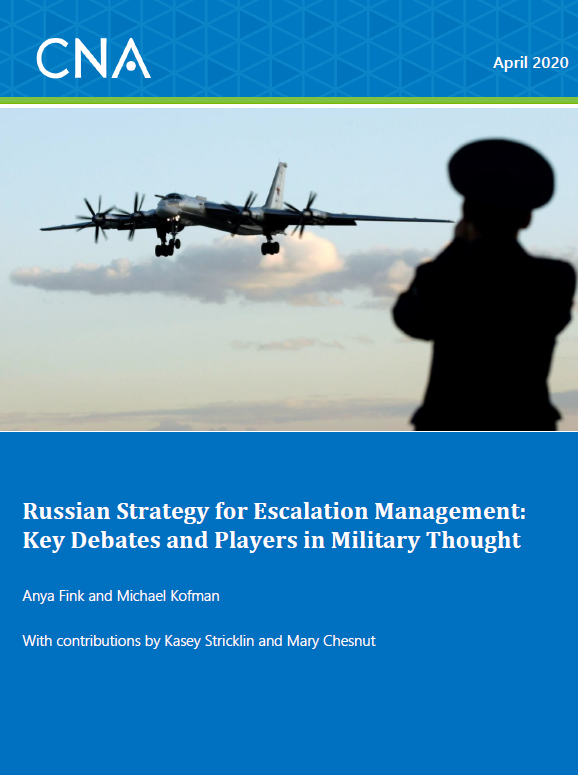The Russian military’s views on escalation management are a subject of considerable interest, and debate, in U.S. and allied analytical circles. However, the structure of discussions among Russian military analysts, plus their evolution over time, have not been a focus of significant attention. This paper fills this gap by providing a guide to key articles and players in Russia’s military-analytical community when it comes to regional nuclear deterrence, nonnuclear deterrence, and damage considerations. Leveraging a large body of research, this report offers snapshots of “debates” on escalation management approaches in Russian military thought over the last three decades. These are not academic or purely theoretical discussions, but military analytical exchanges on operational concepts, strategies, doctrine, and relevant capabilities.
The findings reveal that strategic conventional capabilities are growing more important in Russian thinking on escalation management, though some judge them insufficient for deterrence of regional conflict. In Russian military writings, the role of nonstrategic nuclear weapons is not only enduring, but remains prominent in regional contingencies. Russia’s nonstrategic nuclear weapons complement conventional, while strategic nuclear capabilities remain relevant at the highest thresholds of conflict. Russian military thought has also moved toward concepts premised on “deterrent damage” or damage that could also be subjectively meaningful to a specific adversary. The approach is iterative, and the desired de-escalatory effect is clear, though opinions diverge on how best to tailor this type of damage.
Some in the Russian military-analytical community still advocate for nuclear use at significantly earlier points in a conflict’s escalation, but the consensus across the journals suggests that this remains a losing position in Russian military thinking. Despite the emphasis on the role of nuclear weapons in escalation management, preventive nuclear threats are judged to not be credible in early periods of conflict. Most analysts argue for a means of nonnuclear deterrence that will complement nuclear-based strategies, while equally benefiting from the coercive effect that large nuclear arsenals contribute to calibrated forms of escalation. However the role for nonnuclear deterrence remains a complementary one to that of nuclear weapons, at conflicts of lesser scale such as local wars, or in earlier phases of a regional war. While some debates have clearly been settled, Russian thinking on escalation management and war termination continues to evolve, pricing in new capabilities, integrating added flexibility to the deterrence force structure, and responding to developments in the United States.
Download reportDISTRIBUTION STATEMENT A. Approved for public release: distribution unlimited.
Cleared for public release.
This work was performed under Federal Government Contract No. N00014-16-D-5003
Details
- Pages: 54
- Document Number: DIM-2020-U-026101-Final
- Publication Date: 4/13/2020
